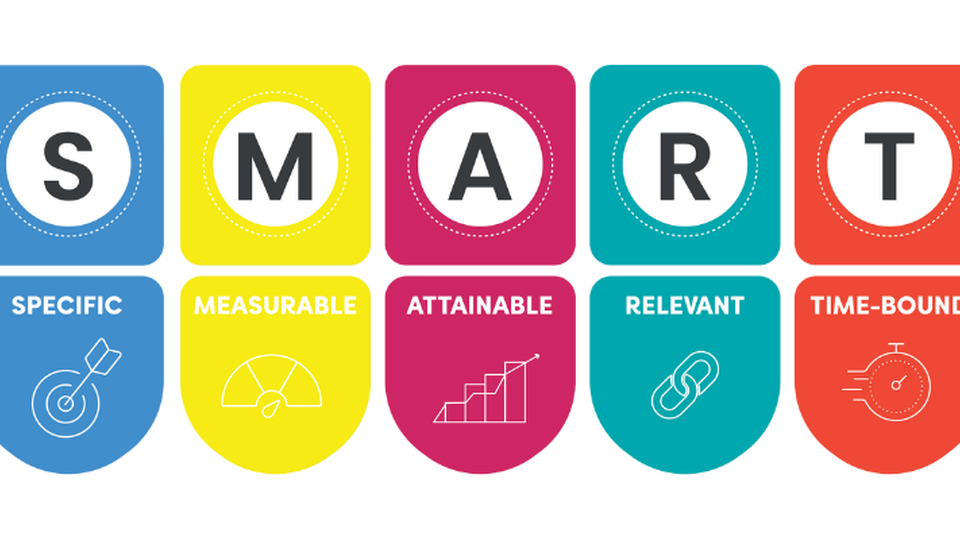Blog
Are your digital signage project goals SMART?
The SMART goal-planning framework is an excellent way to ensure your digital signage implementation is well-defined, achievable, and aligned with your business goals.

April 11, 2023
SMART is a goal-planning method developed by George T. Doran in 1981 that provides organizations with a practical way to set goals and objectives. It stands for Specific, Measurable, Attainable, Relevant, and Time-bound. This framework is an excellent way to ensure your digital signage implementation is well-defined, achievable, and aligned with your business goals.
Here's how you can use the SMART framework for digital signage implementations:
Specific
Define the specific goals and objectives for your digital signage implementation. For example, you want to increase brand awareness, drive more foot traffic to your store, or inform customers about new products or services. Specific answers to the questions Who, What, Which, Where, and Why.
- What is the digital signage intended to accomplish? What problem is digital signage trying to solve?
- Who needs to be involved in this project? Who is the audience for the digital signage? Who will maintain and contribute content to the digital signage network?
- Which resources are currently involved in the project? Which resources should be involved?
- Where will the digital signage be located? Where will your audience be when they interact with your digital signage?
- Why is digital signage important? Why do you need it?
Measurable
Identify key performance indicators (KPIs) that you can use to measure the success of your digital signage implementation. Several key performance indicators (KPIs) can be used to measure the success of a digital signage implementation. The specific KPIs that you track will depend on the goals and objectives of your project, but here are some common ones to consider:
- Engagement rate:This measures how many people interact with your digital signage content by stopping to watch a video or reading information on the display.
- Click-through rate (CTR): This is a standard KPI for digital advertising and measures the percentage of viewers who clicked on a link or call-to-action displayed on the signage.
- Conversion rate: This KPI measures the percentage of viewers who took a specific action from viewing your digital signage, such as purchasing a product or signing up for a service.
- Dwell time: This measures the average length of time that viewers spend watching your digital signage content. Longer dwell times suggest higher engagement and interest in the displayed content.
- Return on investment (ROI): This KPI measures the financial impact of your digital signage implementation, considering the costs of hardware, software, and content creation, as well as the revenue generated from increased sales or other desired outcomes.
- Social media engagement: This KPI measures the number of social media posts, shares, or mentions generated by your digital signage content, which can help increase brand awareness and reach a wider audience.
- Foot traffic: This measures the number of people who visit your store or location after viewing your digital signage, which can help track the effectiveness of your signage in driving traffic and generating sales.
Also, consider harder to track goals such as employee engagement and customer experience. By tracking KPIs, you can measure the success of your digital signage implementation and make data-driven decisions to optimize your content and strategy.
Attainable
Given available resources and constraints, assessing whether your digital signage project goals and objectives are realistic and achievable can be complex. Start by determining the resources available to your organization, including hardware, software, personnel, and budget. Next, identify potential limitations or constraints that might impact your ability to achieve your project goals. For example, what gaps exist between your current resources and those required to complete your project? This might include identifying any additional hardware or software needed, or staffing or skill sets gaps. Finally, prioritize your project objectives based on their importance and feasibility. This will help you focus your resources and efforts on the most critical goals.
Relevant (or Realistic)
Ensure your digital signage implementation aligns with your overall business strategy by identifying the overarching goals of your business, such as increasing sales, improving customer engagement, or enhancing brand awareness. Next, determine your target audience and what messages or information they find most valuable and engaging. Then, create digital signage content that aligns with your business strategy and goals. This might include promoting specific products or services, providing information about your business or industry, or highlighting your brand values and mission.
Continuously analyze and optimize your digital signage content to ensure it resonates with your target audience and achieves your goals. This might involve A/B testing different content formats or messaging or leveraging analytics to identify high-performing content. In addition, ensure that your digital signage implementation is integrated with your other marketing channels, such as social media, email marketing, or in-store promotions. This will help ensure a consistent message and brand experience across all channels.
Time-bound
A successful digital signage implementation has set deadlines for key milestones. To determine deadlines start by defining the scope of your digital signage implementation, including the number of displays, types of content, and any additional hardware or software required. Next, identify any dependencies or prerequisites for your digital signage implementation, such as network connectivity, content creation, or hardware procurement.
Break down your digital signage implementation into milestones like hardware installation, software configuration, content creation, and testing. Estimate the duration of each task and set deadlines for achieving key milestones based on your available resources and constraints and the sequence in which tasks must be completed. Additionally, monitor your project progress and adjust your timeline based on resource changes, dependencies, or limitations.
Following the SMART framework ensures that your digital signage implementation is well-planned, achievable, and aligned with your business goals.
Included In This Story
Omnivex
Omnivex digital signage software enables organizations to collect, present, and share information in real-time, on any screen.


